Ideas
Adobe Xd: Evolve Immediately (An Agency Owner’s Perspective)
Within just a few short months, Adobe XD has improved our workflows, strengthened our relationships with clients, and increased profitability.
It almost didn’t happen.
Switching things up with new technologies can have a colossal impact on business, good and bad. I’ve seen agencies fail by making dramatic shifts in their toolkits. That’s why I’m always cautious about adopting shiny new objects into our proven (and successful) processes. But when Adobe visited us this summer to demo XD, I was instantly reminded of my decade long tenure as a lead designer at Nike. As many of you in the industry surely know, Nike is relentless in its demand for performance, innovation, and perfection at every level. One of their maxims “Evolve Immediately,” aims to adapt to change (hopefully for the better). For most of the 2000s, Nike rendered footwear designs by hand or in Illustrator/Photoshop, then sent the drawings to factories. Six weeks later, we’d get the prototypes back with the wrong industrial design, materials, finishes, or details.
Cue the rework.
“
The technology was disruptive, and initially resisted by many designers and categories. They wanted to stick with the processes and tools they were comfortable with. But Nike encouraged the adoption, and a new era of innovation began.
TED BALDERREE (FORMER DIGITAL STUDIO DIRECTOR AT NIKE)
In 2008, Nike piloted new 3D software tools that provided realistic renderings of footwear designs, complete with materials and finishes. The software also produced mechanical files for our engineering and factory teams. And since the files could be sent to a 3D printer for rapid prototyping, the technology changed almost every aspect of footwear design—extending the impact to development, marketing, and sales.
With something this big and radical, you can imagine the heel-dragging. Former Nike Digital Studio Director, Ted Balderree, captures the mood at the time perfectly: “The technology was disruptive, and initially resisted by many designers and categories. They wanted to stick with the processes and tools they were comfortable with. But Nike encouraged the adoption, and a new era of innovation began.”
History stops for nobody. 3D software pushed everyone to elevate their game. As creatives, our process was accelerated yet amplified. Our design decisions got better. Concurrently, efficiencies in manufacturing skyrocketed, cutting turnaround time dramatically. Pre-sale orders with merchants increased due to heightened confidence in early samples.
Most of all, the final product was just better. By spending less time producing, we had more energy to obsess over the details, collaborate, dial-in the user experience, source the right materials, and make a great fucking shoe.
ADOBE XD — The New Era
XD is the new standard for experience design
Today, I own a small agency in Portland, Oregon called Watson Creative. Like any creative team, when we’re not designing, illustrating and otherwise creating, our agency enjoys posturing as armchair software engineers. Not in any meaningful way, mind you, only from the highest “I would have done it this way” level.
Although we can often lament our existing tools, wishing they were able to perform in a certain way, human behavior hasn’t changed since my time at Nike. Translation: we don’t have the time or patience to learn something new.
Enter Adobe.
We were lucky to have Adobe visit our office last summer to do a focus group on a program that was new to us: Adobe XD. They shared valuable insights on the way we create with our entire creative staff and presented streamlined workflows that all centered around prototyping – amplified iterative refinement.
Here comes the number crunching. Pfeiffer Consulting reported in their benchmark research from Adobe XD CC: Streamlining User Experience Design, that you can expect nearly a 10x productivity increase in various workflow situations, with 3x faster workflows with prototyping alone.
This might be true, but how does it measure up in our workflow? We used Illustrator from 2013 to late 2017, then switched to Sketch. We’ve gone from Illustrator to Sketch to XD and ran the numbers for websites designed in Illustrator, Sketch and XD. Below is what we found when summing up the numbers from our entire project team in regard to concept, sitemaps, wireframes, design, prototyping, development, Q/A, and launch. Already we are saving around 25% on hours for our overall projects.
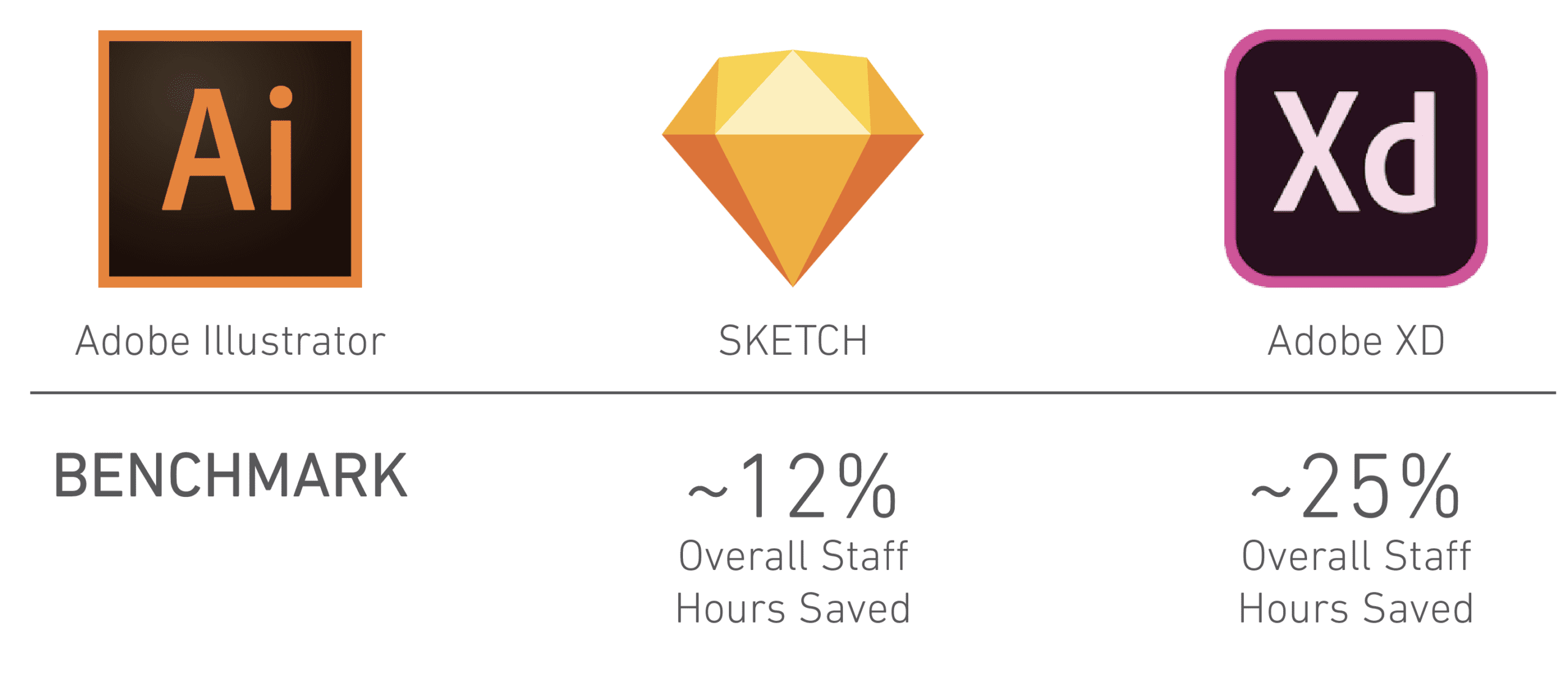
Although our overall workflow efficiencies with XD haven’t quite reached 10x faster than Adobe Illustrator, we fully anticipate that we’ll get there in time. Given the efficiencies we’ve achieved in such a short time, we can only continue to improve.
As other agencies make the move over to XD, they’re seeing the same efficiencies in their studios. Hugo & Marie is a creative agency based in New York City that previously used Photoshop for web design. The feedback on XD from their design team is simple yet critical: every little thing Photoshop can do for site design, XD can do faster.
“
After moving to XD, using Photoshop for web design is like death by 1000 cuts. Any drawbacks to XD are completely outweighed by its performance.
MARIO HUGO (DIRECTOR & ILLUSTRATOR AT HUGO & MARIE)
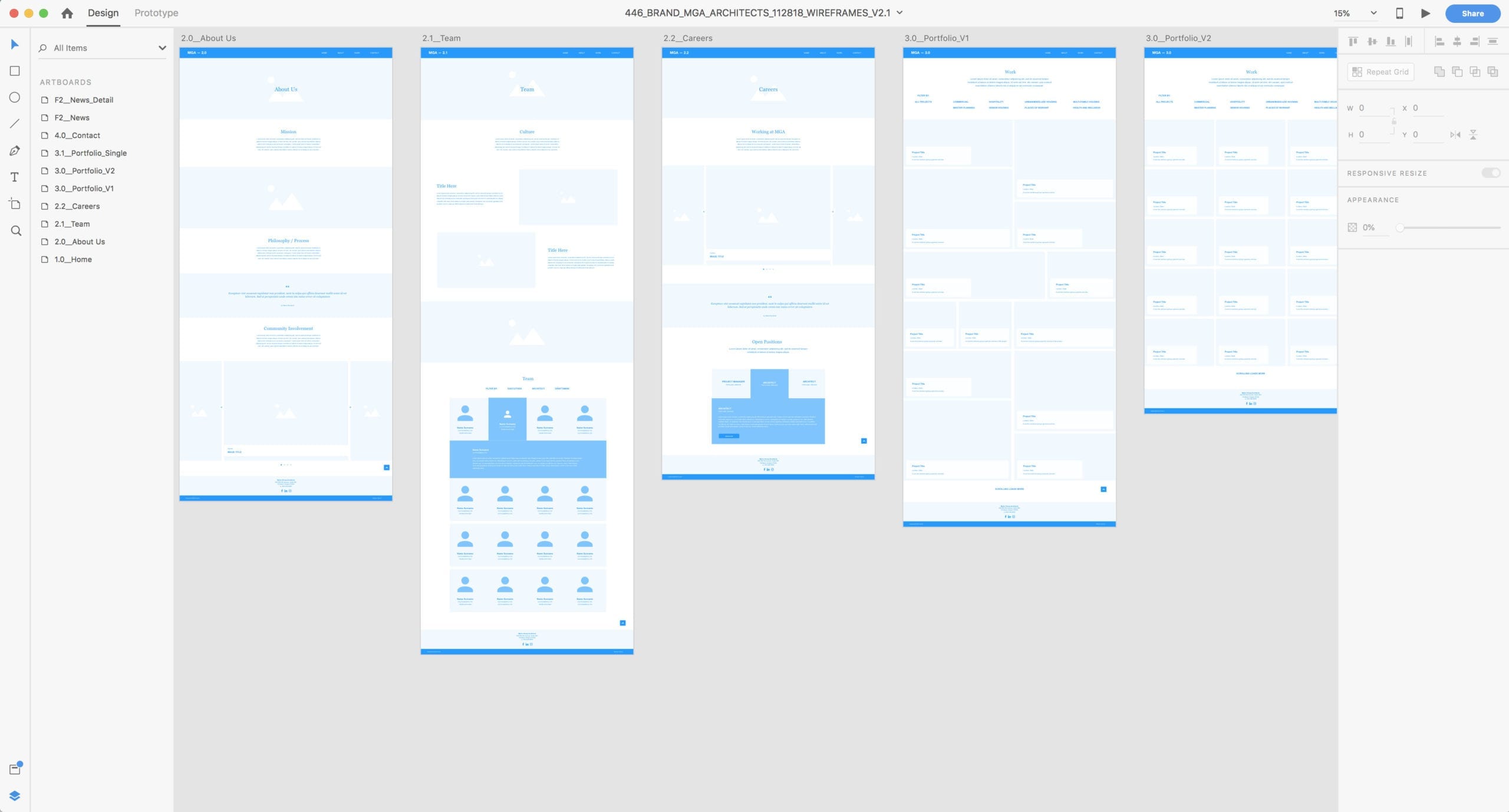
As time goes on, I imagine the software will improve and we will continue to refine our process to better leverage XD. I believe the third party apps and Creative Cloud Libraries will continue to mature and further optimize our process.
THE XD BENEFITS
The high-level benefits observed in our own studio
The first minute of a project is as important as the last, especially on projects that will involve collaboration with several stakeholders on a team. Author Stephen Covey has made millions stressing the point, “Plan the work, work the plan.” XD is a phenomenal tool for working on the blueprint phase of a project, or to help scope a project when building a proposal. Improved pre-planning allows us to take advantage of studying behavior, complexity, and scope for a potential project. The beautiful things in our pre-work often dovetail nicely into the actual project. When you lay the right groundwork, the finished product is more successful.
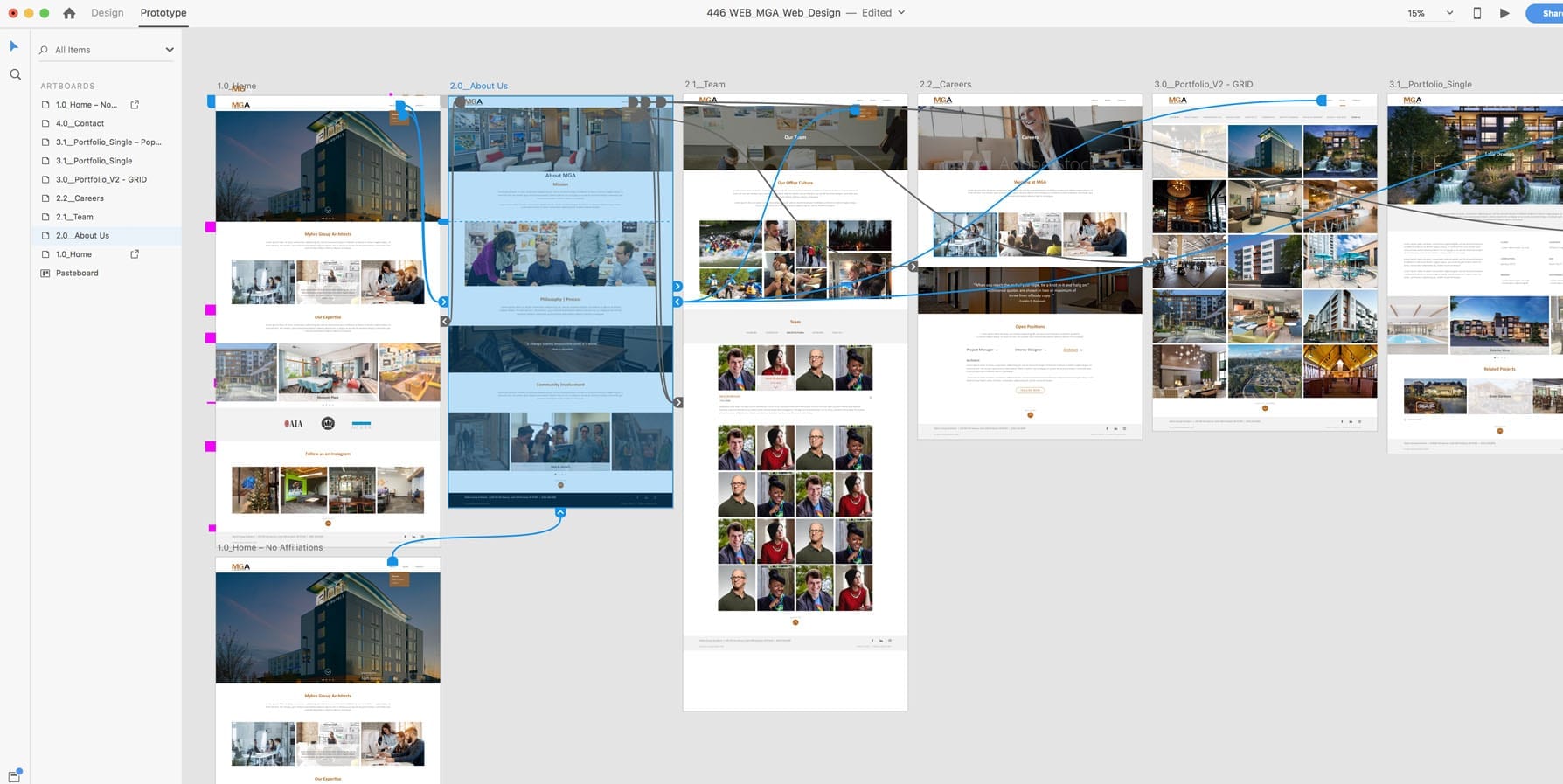
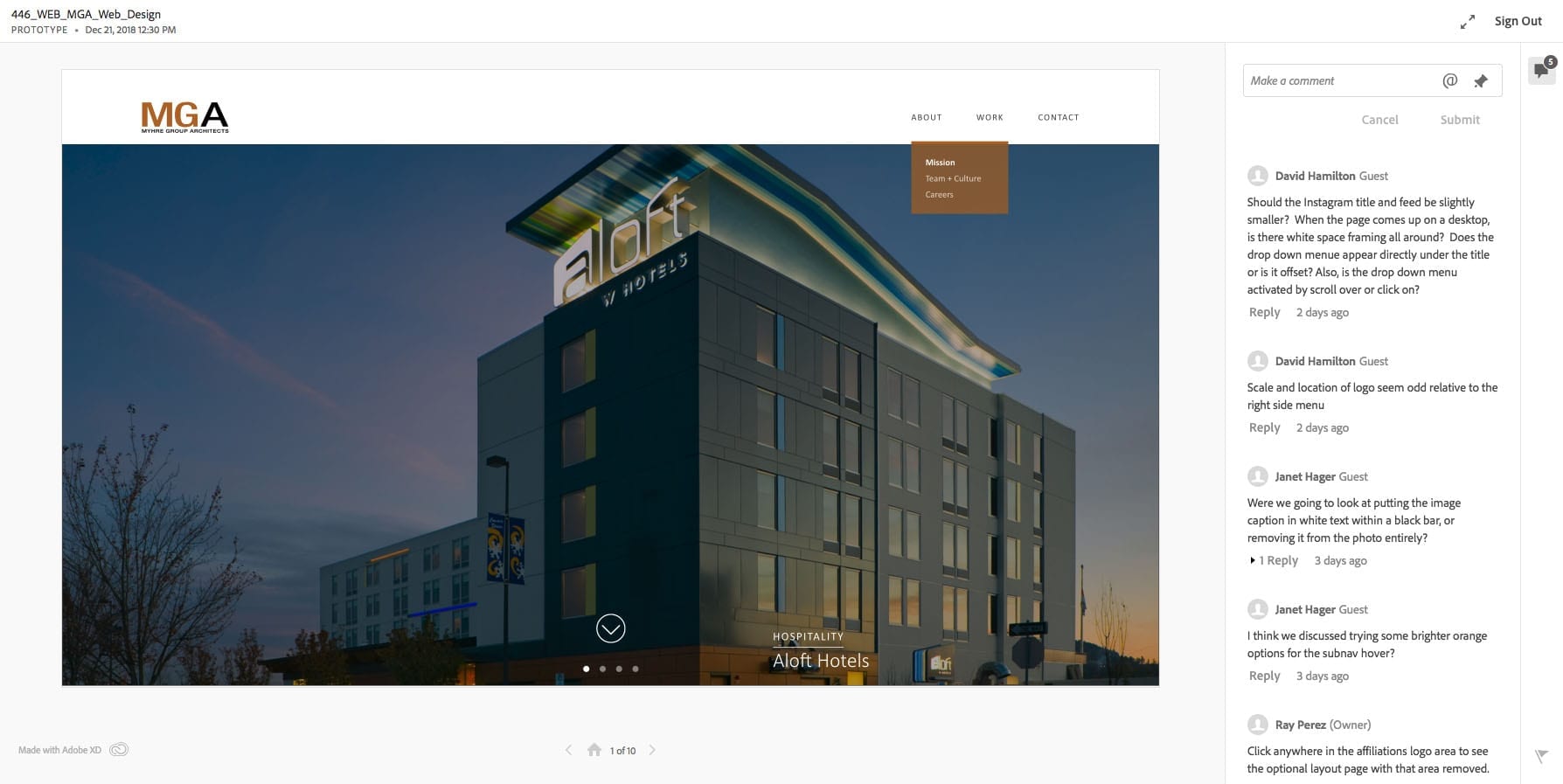
FLUID COLLABORATION – UI, UX, DESIGN, STORYTELLING, STRATEGY, AND CODE
Today, I look across my teams and realize that XD has empowered everyone to cross-pollinate ideas that ultimately make for richer experiences and better storytelling. It’s reinventing and connecting the way we do business.
And it’s way better.
The way XD can impact your organization is profound. Since switching to XD, I’ve noticed major changes in our studio, including convergence of talent, fluid and streamlined department collaboration, and interactive prototypes for efficient client feedback.
From development to marketing, design to management—the lines are blurring between what was previously seen as distinctly different departments. We’re all storytellers.
PROTOTYPE
I remember our professor in college refused to review work on-screen – he’d simply walk away. That was back in the day when most of our work was print and packaging related, but I think if he had seen an Adobe XD prototype, he would be singing a new tune for on-screen design. Here’s why.
Adobe XD prototypes reveal nuances that you ordinarily wouldn’t see or resolve onscreen, including size, spacing, layout, flow of a book, and 3D experience of packaging. Today, our staff is constantly prototyping with XD’s advanced features, allowing us to:
- Study & optimize the user experience Study behavior (even voice commands)
- Refine content and storylines
- Collaborate with Development
- Host efficient client feedback workshops
- (see below)
- Garner earlier client buy-off
- Have fewer lengthy rounds of review
Like Nike in 2008, rapid prototyping is a game-changing feature. It allows us to quickly test and validate in real-time with our internal stakeholders, collaborators, clients.
WORKSHOPS – NOT DESIGN BY COMMITTEE
We’ve trimmed a lot of fat by moving to workshops for projects with smaller budgets and tight timelines. We now have reduced meeting times with clients due to quick and realistic prototyping. We’re able to give a solid vision early in the game, which means quicker client buy-off and less “Design by Committee.”
There’s nothing more awkward than technical difficulties during a client workshop. The loudest silence fills the room as you collectively wait for your content to load, the dreaded rainbow beach ball spinning. Anyone else sweating? Never again with XD. Load up a large website, full of images, graphics and other content in one file on a MacBook Air and cruise right along. Phew!
ACCURACY
Inevitably a growing studio is going to start moving faster, and typically this means details may be lost. However, with the capabilities of XD, our accuracy and design intent have improved drastically. For us, improved accuracy means:
• Fewer rounds of feedback
• Efficient use of staff time
• Better annotations, specs,
and testing
• Less ambiguity and wasted time
making elaborate annotations
• More detailed Q/A from our
Developers in less time
• Reduced Project Management
hours
• Happier clients****
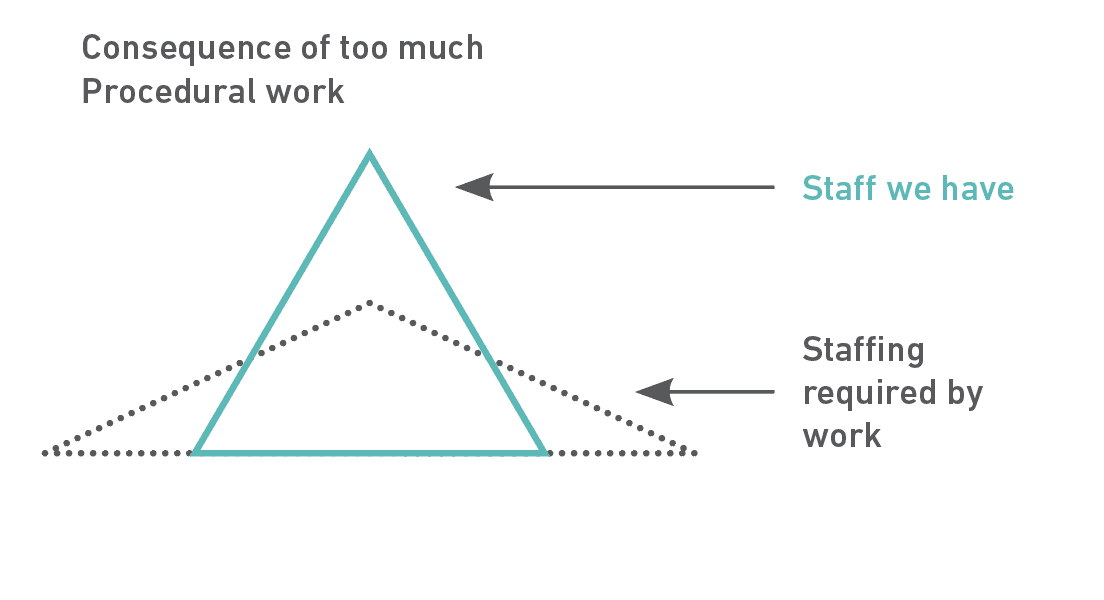
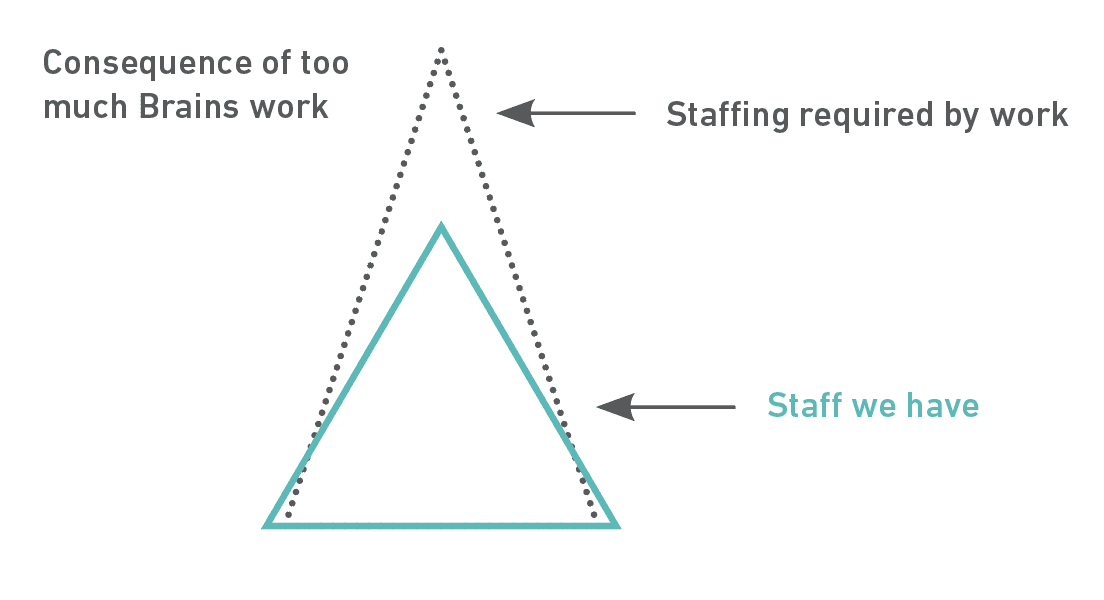
ORG CHART CHANGES: BRAINS VS. PROCEDURAL WORK
Our work is complex; that’s not really going to change. However, leveraging XD to centralize work, feedback, and automate specifications to development will reduce procedural work – the crux of most organizational charts. At left is a chart from David H. Maisters book, Managing Professional Service Firms. In this chart, he explores the connection between seasoned staff and junior staff.
For us, Adobe XD has helped eliminate the need for as much procedural “junior staff” because it simply eliminates or automates a lot of the production work associated with producing the responsive designs for websites, thereby saving resources and workload. Looks like we’re going to need to come up with something else for the interns to do.
JUST DOING IT
Take the plunge. Roll the dice. Dive in. Make it happen.
Don’t get me wrong, some staff may grumble at the idea of changing tools. With the shift to Adobe XD, it’s been nothing more than an initial speed bump that has lead to better performance and better creative execution across the board.
After using Adobe XD in our studio for several months, I’ve shaved off a good portion of useless production hours and increased my best thinkers to push their designs further. In the same vain, Nike trimmed months off their product creation cycle while elevating their solutions, ultimately improving their efficiencies and producing better product. For those who argue to stay with Photoshop or Illustrator, you are not empowering yourself with the quick ability to study behavior through interactive prototypes (and much more).
For those who have adopted Sketch, have you heard of Quarkxpress? It’s not the first time Adobe annihilated a competitor and I’d put my money on Adobe for thoughtful innovation. Adobe XD is not a tool. It’s an evolution.
About the Author
Matt Watson is the Creative Director and Founder of Watson Creative in Portland, Oregon. Matt earned his stripes working for Lippincott, a global leader in brand design based in NYC, before moving back to Oregon. There, he spent over ten years at Nike as a designer in several key business categories. The last position he occupied was senior member of Nike’s creative team, where he helped evolve NIKEiD.
Matt’s work and writings have been featured in over 50 publications, seven documentary films, as well as at New York’s Museum of Modern Art.
About Hugo & Marie
Hugo & Marie is a multi-disciplinary creative studio and artist representation firm based in New York City.
Founded in 2008, the company has been built around a distinct visual language that interweaves the values of its founders and artists with the character of its commercial clients.
Hugo & Marie has collaborated with brands including Yves Saint Laurent, Nike, Apple, Stella McCartney, Hermès and Rihanna.
Adobe Xd: Evolve Immediately (An Agency Owner’s Perspective)
by Matt Watson
